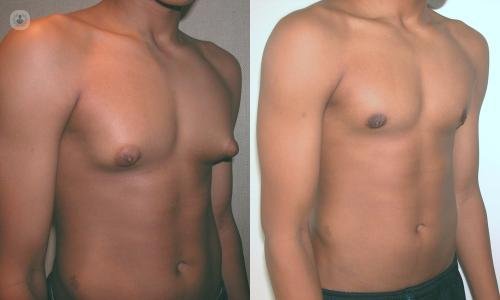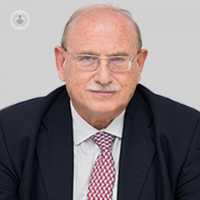Addressing gynecomastia
Written by:Gynecomastia is defined as the increased volume of the mammary gland in the male. We must distinguish the true from false gynecomastia gynecomastia (pseudoginecomastia), in which there is an increase in breast volume but at the expense mainly of fatty tissue that surrounds the gland. Therefore, it is considered true gynecomastia gynecomastia or any increase in the volume of the mammary gland.
Causes of gynecomastia
Gynecomastia can occur for several reasons:
- Unknown or idiopathic. It is the most common and occurs in all ages, with varying frequency.
- Normal hormonal imbalance. It occurs in adolescents. The breast is sensitive to hormonal changes that occur at this stage of life and responds as in women, with the development of the breast. In these cases the volume of the breast can regain normal size and so you have to wait until the end of adolescence.
- endocrinological abnormalities. In this group are some pituitary tumors that cause breast development. This is the case of prolactinomas. However, other tumors can also cause gynecomastia, such as testicular tumors, adrenal ...
- hormonal overload. This is the case of people addicted to the gym, combining this healthy activity with taking less healthy products that promote muscle development and breast.
- Breast diseases. It is the case of breast cancer in men. In these cases the growth of the breast is unilateral.
- extramamarias diseases. In this group, liver diseases in which alteration hepatic metabolism allows estrogenic hormones, which act as effector viscera breast, breast development favoring. Liver cirrhosis is frequently accompanied by gynecomastia.
- Medicines. Patients with prostate diseases such as benign prostatic hypertrophy, are treated with drugs that inhibit the action of testosterone, favoring therefore the action of estrogen.

Diagnosis and treatment of gynecomastia
The first is a detailed anamnesis and proper examination by the expert in General Surgery. In this regard note the time of evolution, life habits, medication taken by the patient and symptoms will be taken to refer. For proper treatment it is important to know if the increase is symmetrical and symptomatic breast; that is, whether or not you have pain. In this case, we say that gynecomastia is accompanied by mastalgia. Typically, more than pain, discomfort in the breast has to rubbing or putting on and removing clothes. With regard to the asymmetry, the patient should be asked if you have a history of breast cancer in the family, a fact that may lead to the diagnosis.
In scanning should check the degree of symmetry, increased consistency behind the nipple-areola complex reflecting gynecomastia and the presence of tenderness.
The diagnostic test request image that can not miss ultrasound and mammography, in case the breast has sufficient volume to be confirmed. Breast size depends on the patient's constitution, but all glandular rise above 3 cms. can be considered as indicative of surgery, especially if symptomatic (pain or discomfort) and causes psychological problems for the patient, for aesthetic problems.
In addition, the specialist will ask a series of analyzes that will agree with the age of the patient, as in adults should not apply for this battery as complete analysis because the age rule out certain diseases. prolactin (PRL), luteinizing hormone (LH), testosterone (T), HCG, estradiol (E), TSH and T4 will be required. When these hormones are normal, it is an idiopathic gynecomastia. The various changes in analytical standards routed us different diagnoses:
- primary hypogonadism
- secondary hypogonadism
- testicular tumors
- adrenal tumors
- Androgen resistance
- Increased aromatase activity ...
What kind of gynecomastia be treated
The patient goes to the consultation for three reasons mainly:
- cosmetic damage. Occurs in adolescents who, to conceal the breast enlargement, do not wear baggy clothes and bathe in summer in public places not discover others that breast augmentation. The indication in these cases is linked more to the psychological damage these patients endure.
- breast pain. It occurs at any age and should know the degree of discomfort or pain and the impact these symptoms have on the normal life of the patient.
- Need for a diagnosis for suspected malignancy. In all cases should assess age, symptoms, breast volume, background, taking drugs or products, as well as comorbidities. Not to precipitate the surgical treatment. The prudent, if there is no external cause and this is an idiopathic gynecomastia, is retesting at 6 months to see the evolution unless symptoms are very striking, gynecomastia is in the range of intervention and damage it is evident psychological.
Gynecomastia surgery
Like any surgery, gynecomastia surgery is no exception to the usual anesthetic and surgical complications, especially in people over 65 years that are frequent cardiac, vascular, pulmonary, hematologic comorbidities, etc..
The surgery consists of a lower hemicircunferencial incision around the areola, which allows the removal of the glandular breast tissue. Occasionally, a drain may be, who is retiring after 24 hours.
Gynecomastia possibility of recurrence after treatment
Typically not play. However, in order that no necrosis nipple areolar complex, is necessary to leave a minimal amount of breast tissue when the breast is removed. That minimum tissue may regrow if there was sufficient conditions for this to happen. Not so often, but the patient must be warned.


